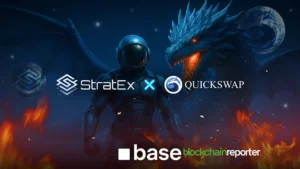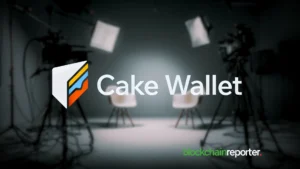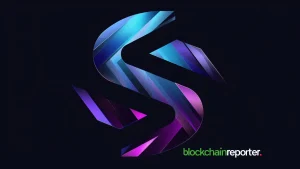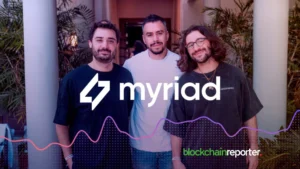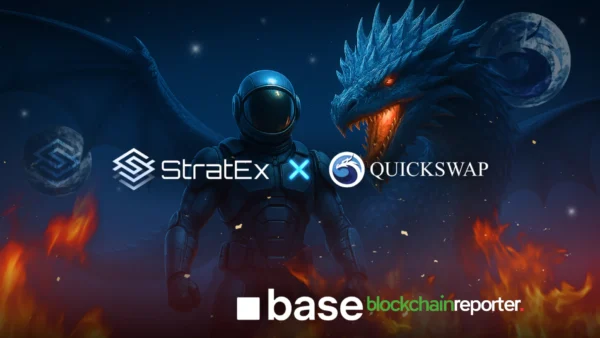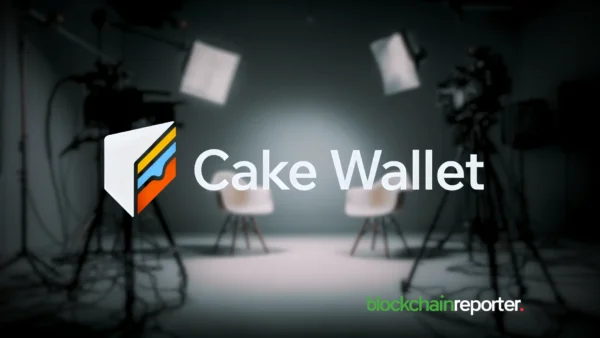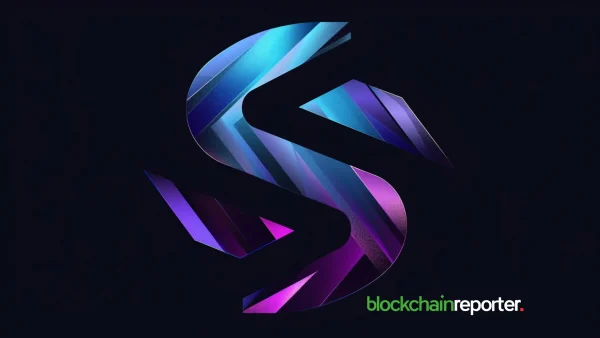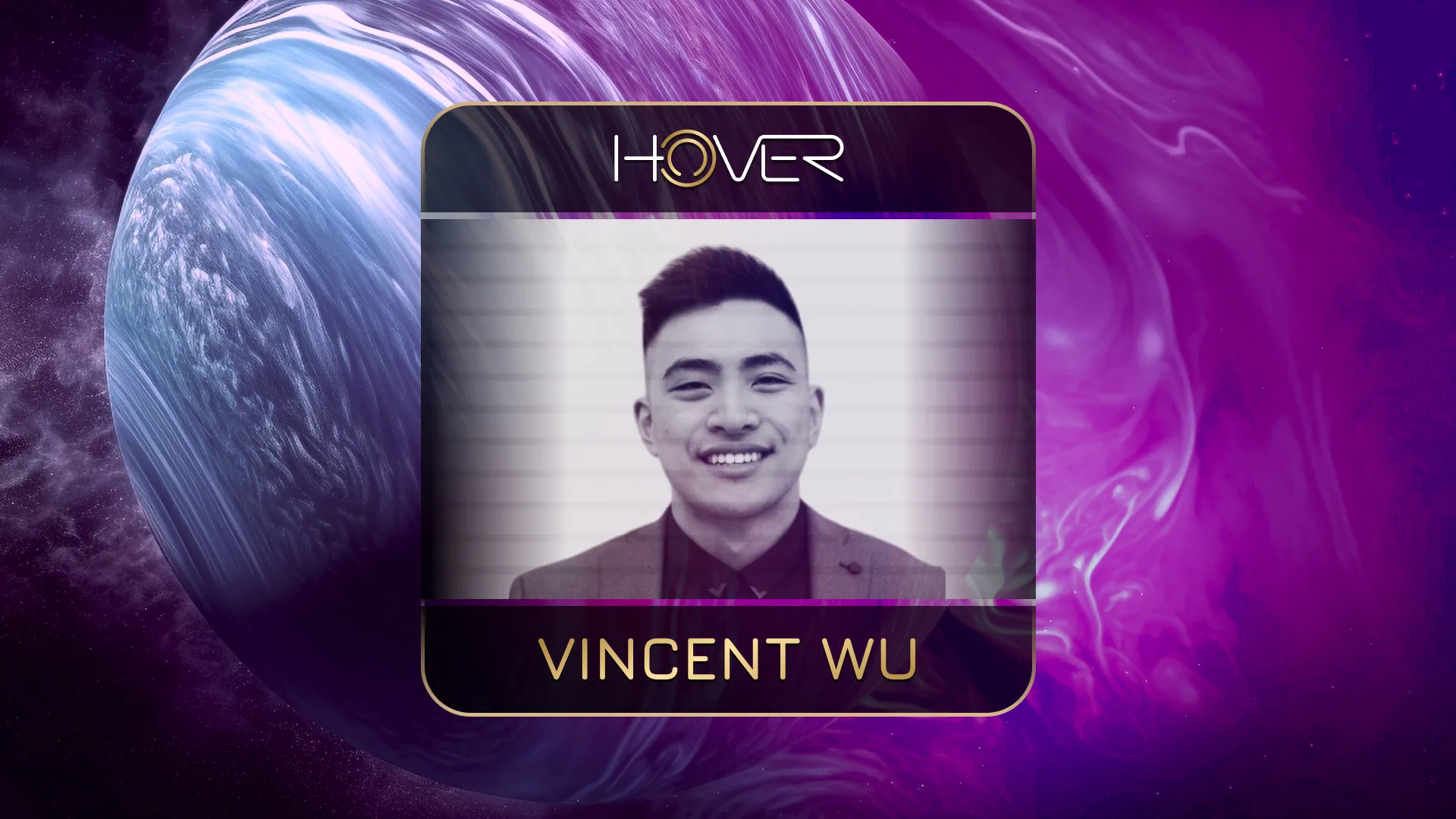
BlockchainReporter had the pleasure of sitting down with Vincent Wu, the Director of Hover, a pioneering non-custodial liquidity market protocol revolutionizing the DeFi landscape. Vincent brings a wealth of experience in institutional trading and DeFi primitives to the table, having previously served as the Director of Institutional Sales at Crypto.com.
In this exclusive interview, he provides insights into Hover’s mission, its unique approach to bridging traditional finance and DeFi, the role of strategic partnerships, and the exciting future of decentralized finance. Vincent also shares his views on the impact of memes in the crypto space and offers valuable advice to aspiring entrepreneurs and developers entering the blockchain and DeFi arena. Read on to gain a deeper understanding of how Hover is shaping the future of on-chain finance.
Q1. Can you provide an overview of Hover and its mission within the DeFi landscape, especially its role in supporting the growth of Cosmos and its native integration with the KAVA ecosystem?
Hover is a next generation lending protocol that is building the foundation for new financial instruments to thrive on Defi. We’re a lending market at heart but we’re building liquid staking derivatives, lending services on other protocols, peer to peer lending, as well as fixed incomes strategies on-chain.
We’re working with the Kava ecosystem as they are one of the larger zones on the Cosmos ecosystem. We see an opportunity here as they are EVM compatible which lowers the barriers to entry for other projects to onboard. This in turn will allow us to work with new projects that are joining the Cosmos ecosystem as well as to be able to integrate with Cosmos as a whole.
Q2. Your background includes experience in institutional trading and DeFi primitives. How does Hover bridge the gap between traditional finance and the world of decentralized finance?
Think of Hover as a foundational layer of lending. We are launching a lending protocol facilitated by our lending pools for users to earn yield or borrow. As we continue to build we will treat our markets as a foundation to work with other protocols to build more complex financial instruments. For example, we’re seeing a lot of traction in LSTs or Liquid Staking Tokens which derive yield from validator nodes.
We see this as a Web3 version of what fixed income looks like and this allows us to bridge the gap to build financial products that look similar to what an institution would trade. As long as there is regulatory and compliance oversight on the products being built to assure these products are safe to trade.
Q3. As the former Director of Institutional Sales at Crypto.com, you managed relationships with key industry players. How has this experience influenced your approach to marketing and strategy at Hover?
These relationships allow Hover to keep our fingers on the pulse for where the industry is heading. We’re constantly speaking with various counterparties to see what we can do better and how we should build a future-proof roadmap years down the road. In addition to this we are able to build out key opinion leaders and advisors that can help pilot a few of our products and make sure that everything we are building will help Defi in the long run.
Q4. Hover is often described as a revolutionary non-custodial liquidity market protocol. Could you explain what sets Hover apart from other DeFi projects in this space?
Apart from other DeFi lending protocols, we’ve redone our tokenomics to assure value for our holders. What we mean by this, is that we’ve seen a similar paradigm for DeFi lending protocols. They increase their token supply via emissions to build out TVL hoping that the increased TVL captures market share. In return, they hope that the increased market share leads to token demand.
In reality, the high emissions will increase the supply and the utility will be what constitutes token demand. Most lending protocols in today’s market do not reward holders and only provide governance as their utility. We’re setting ourselves apart by changing this paradigm with our Smart Emissions and building our Hover Staking Program (HSP) to drive protocol value on top of all the new products we’re building.
Q5. One of your areas of expertise is OTC trading. How does Hover address the needs of institutional traders and investors, and what advantages does it offer in terms of liquidity?
OTC Trading is an interesting area in the Web3 Space. What used to be two counterparties negotiating a few BPS for a large transaction on a messaging application turned into fully robust RFQ venues built by larger market makers. They saw the demand on their OTC desks that required the use of front ends to deal with the volume of OTC transactions. I mean, this beats having a trader around 24/7 if you have enough market depth in your aggregate books to execute the trades.
We see a very similar growth happening in lending on Defi. Current lending protocols are not supportive of larger institutional traders or investors. Imagine trying to deposit $50M or borrow $50M on a USDT lending pool with less than $10M in it. As a depositor, you would not earn your opportunity costs worth of yield and as a borrower the rates you pay via the Jump Rate model would not make it cost effective to do so. Hover recognizes this and we’re building P2P lending modules similar to how tri-party repo arrangements work. This will support arrangements that require deep liquidity and reliability of a fixed term which is what institutional investors and traders value most.
Q6. In the rapidly evolving DeFi landscape, partnerships are crucial. Could you share some insights into Hover’s strategic partnerships and their significance for the project?
Internally, we’re working with various partners to assure continued success for Hover. For one, we’re working with Lworks for risk management. They’re a strong team that has worked with the likes of Ray Dalio. We’re working with Pyth for data to prevent abnormal liquidations. We’re working with various DEXs cross chain to also provide ample liquidity to our lending markets to scale for larger TVLs. This is in addition to our marketmakers and the various protocols on the Cosmos Ecosystem to build out financial products, which will be revealed shortly.
Q7. With your background in Web3 and Web2, what advice would you offer to aspiring entrepreneurs and developers looking to enter the blockchain and DeFi space?
Don’t be afraid to try. Traditionally, you would need to raise a bunch of money with your MVP in order to scale effectively. Even with SaaS products and bleeding edge tech — you would engage in founder led sales until you reach a point where you’d need to hire enterprise level sales in order to sustain scalability. In Web3 it’s a bit more exciting. You can build out your MVP and rally a community in testnet.
If your idea works the volume will come with a bit of marketing and your main net launch will be successful. I’ve seen a few projects that just launch their products without funding and build significant traction just by how useful it is. This industry is relatively quick in helping you realize if your project will be a success, or if it needs a couple of iterations to become successful. The best part is that the feedback in Web3 is almost instantaneous.
Interview Summary
In this insightful interview with Vincent Wu, Director of Hover, we’ve explored the groundbreaking world of DeFi and the transformative potential of Hover’s non-custodial liquidity market protocol. Vincent’s expertise in institutional trading and DeFi primitives offers valuable perspectives on how Hover bridges the gap between traditional finance and decentralized finance, setting it apart from other projects in the space.
Hover’s unique tokenomics and approach to value creation for holders, combined with its commitment to building deep liquidity and reliability, make it an essential player in the DeFi landscape. Additionally, Vincent’s insights into the role of memes in the crypto space provide a fresh perspective on how viral content can drive retail interest and on-chain transaction volume, igniting interest and participation in the world of decentralized finance.
As the DeFi landscape continues to evolve, Hover’s strategic partnerships and innovative solutions ensure its place at the forefront of the DeFi revolution, offering a glimpse into a more dynamic and promising future for on-chain finance. The interview with Vincent Wu not only sheds light on Hover’s vision but also provides a glimpse of the exciting developments within the DeFi ecosystem. It’s a testament to how projects like Hover are driving innovation and reshaping the future of finance through decentralization and blockchain technology.

